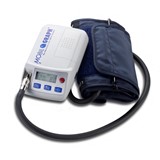Dr Kim Webber, Murray Darling Medical School (MDMS) Executive Director was commenting on the Medical Workforce 2012 report, from the Australian Institute of Health Welfare.
"While we have more medical students in Australia, and more doctors, we are still reliant on recruiting doctors from overseas into rural areas," she said.
"Two in every three GPs in rural areas are now recruited from overseas.
"We are producing more medical graduates than ever before, but not enough go on to work in rural areas. It is time for rural Australia to train our own doctors in rural Australia."
The MDMS is a joint proposal from Charles Sturt University (CSU) and La Trobe University for a new medical school with a specific remit to address medical workforce shortages in rural areas.
The MDMS proposal includes a guaranteed 80 per cent intake of students from rural areas who will be trained in rural areas with a curriculum focussed on the skills needed by doctors in rural areas.
Dr Webber said rural health workforce shortages were sometimes misunderstood as questions of simple numbers.
"For example, if you look at the number of doctors — particularly general practitioners — per head of population in remote areas it seems quite reasonable in comparison with other areas," she said.
"But the population those GPs serve is spread over 6 million square kilometres. So, in effect, while people in major cities have four doctors to choose from within a square kilometre of where they live, people in remote areas have one doctor for every 1000 square kilometres.
"What's more, the report clearly shows doctors in outer regional and remote areas are busier than doctors in major cities and inner regional areas which means patients have to wait longer to see them.
"In fact, while the average hours for doctors in cities and inner regional areas have decreased since 2008 the average hours in outer regional and remote areas have increased — doctors in the bush are working harder than ever."
Dr Webber said rural and regional Australians had spent decades waiting for the current measures to increase their access to health services with current approaches not enough to provide sufficient doctors needed by rural communities.
"Rural and regional people deserve better access to healthcare and doctors, and it’s time for new solutions that are proven to work," she said.
"We need to train rural students, who are eager for the opportunity to make a difference in their communities, to work as rural doctors.
"That means training them in rural areas, with a curriculum tailored to rural conditions. And the MDMS has been created to do just that."












